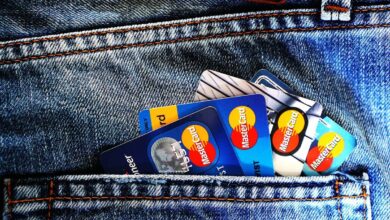
Are Banks Red-Lining Certain Areas Due To Safety Concerns?
According to Hendrik Pieterse, manager of Leapfrog Property Group Eerste River, some banks are declining home loans in certain areas where others would grant a mortgage, based on safety concerns. This practice has become known as red-lining, and Pieterse believes it is keeping the young and the poor out of the property market.
Red-lining is based on a decision made by a bank (but never admitted to) during which the institution demarcates an area as too risky and for which it refuses to approve home loans – applications are accepted but declined. The types of areas that are deemed too risky tend to be close to townships, areas of high crime and the like.
“One can never force a bank to lend money when the risk factors are out of the ordinary. It’s not as if banks sit on their own money and can take big risks with it, lending it and losing it. Very little of a bank’s money actually belongs to the bank, less than 6% if I’m not mistaken, the remaining 94% is ‘borrowed’ from investors, so they have to be conservative as they’re the financial custodians,” explains Jan le Roux, CE of REBOSA (Real Estate Business Owners of South Africa).
A lack of funding leads to market stagnation
While the position of banks is certainly understandable, so called red-lining makes it very difficult for people in certain areas to get financing for property; in essence, sellers can’t sell and buyers can’t buy due to a lack of funds.
“We often list a property in our area but the valuators from certain banks will devalue the property in their estimates, which in my opinion is wrong. Younger people find it hard to get a house in the areas they grew up in because the banks decide for them (by denying their home loan application), especially if there are RDP houses near the property in question,” says Pieterse.
Eerste River locals often want to stay in the area to be close to their families, while starting their own family. Young couples are generally looking for a freehold property with the option to expand the home as their needs increase. Pieterse notes that the average freehold property sells for between R400,000 and R600,000 and that buyers are happy to purchase, even near RDP housing, as they secure the property themselves with fencing, alarms and the like.
Considering that the average household income in Eerste River is between R9,000 and R17,000, it’s clear that these buyers will need home loans.
Possible solutions
Le Roux believes there are a number of options available to banks and buyers: “Where banks can do so much better is to be honest about specific areas, saying that they’ve had bad experiences etc., and instead of outright refusing the application, can offer alternatives such as asking for higher deposits, a lower ratio of what the purchaser is allowed to borrow (normally a buyer can spend 30% of his or her income on home loan repayments, perhaps this can be lowered to 25%), or insisting on a collateral investment from a family member for example to reduce the banks’ risk.”
He continues to indicate that agents operating in problematic areas can also show their commitment to the neighbourhood by investing 50% of their commission as a collateral investment in the loan. “Collateral investments are always for a specific time frame and the funds will be reimbursed after a certain period, once the bank’s risk has been sufficiently lowered. I believe that this shows a tremendous amount of faith in the area by the agent,” believes le Roux.






